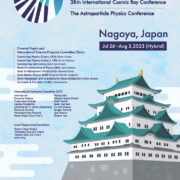The KM3NeT Collaboration reunited in Texel for its spring meeting
23 June 2024 – KM3NeT has met, in Texel (The Netherlands) and online, for its spring Collaboration meeting, hosted by NIOZ, the Royal Netherlands Institute for Sea Research.
The meeting brought together collaborators in order to review the status of the ongoing analyses, Monte Carlo simulations and calibration efforts, for both the ARCA and ORCA detectors, and prepare exciting contributions to the Neutrino 2024 Conference.


